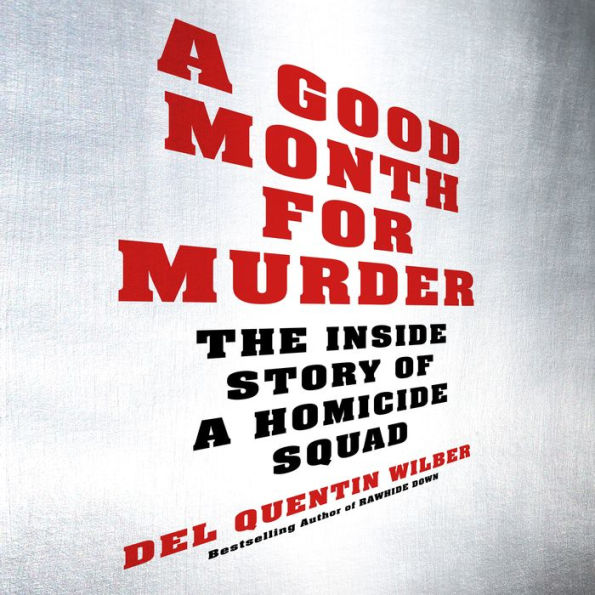From the Publisher
"Superb—one of the best real-life cop books ever written." —Lee Child
"The book is briskly paced. . . . Wilber, a former Washington Post reporter, is painstaking in tracing how the detectives go about their fieldwork. The cat-and-mouse games they play with suspects in the interrogation room are fascinating." —The Washington Post
"Excellent . . . Mr. Wilber has a keen reporter's eye and ear for detail and a deft pen that sometimes skewers with funny yet unstinting prose the very detectives who granted him entrée to their world. . . . Wilber gets high marks for placing readers smack inside the world of his characters—in the stuffy, fluorescent-lit homicide offices, the bloody murder scenes, and the claustrophobic interview rooms as detectives cajole, intimidate, and banter with witnesses." —Pittsburgh Post-Gazette
"Wilber is a former veteran Baltimore Sun and Washington Post reporter who spent one cold February in 2013 tailing . . . this group of hardened but dedicated detectives, bent on justice but beset by impossible odds. It's like David Simon's The Wire—urgent but cold-eyed and tragic—and it's all true." —Men's Fitness
"With this engrossing and compelling account of the reality of crime and policing, Del Quentin Wilber affirms his place as one of the nation's most accomplished writers of first-rate narrative nonfiction. Put away your mysteries and thrillers—this is the real thing, rendered with grit and with grace." —Jon Meacham, author of American Lion and Destiny and Power
Kirkus Reviews
2016-04-11
Propulsive account of a hard-charging homicide unit in a high-crime Washington, D.C., suburb.Wilber (Rawhide Down: The Near Assassination of Ronald Reagan, 2011), who covers the Justice Department for the Los Angeles Times, develops a vivid sense of place alongside gritty workaday realities, resulting in a fresh take on the familiar topic of killers and their pursuers. He focuses on Prince George's County, a sprawling "microcosm of the new America" that conceals startling murder rates, even during the chilly February of 2013, when the detectives he shadowed felt "there was simply too much pent-up violence on the streets, and it needed an outlet." The resulting 12 murders included gang sprees, home invasions, drug-conspiracy killings, and predatory robberies. The rash of violence fully taxed the 25 detectives whom Wilber profiles, a diverse, eccentric, yet accomplished array who can be "like cut-ups in high-school biology class"—notwithstanding their grisly surroundings and the challenge of investigation, equal parts forensic precision, bureaucratic documentation, and Kafka-esque conversations with criminal prevaricators. Such interviews with suspects make up several tense stretches, where "for the most part, the suspect deflects and evades" while still giving away insights to their interrogators (and Wilber). In a narrative light on technical and tactical aspects of policing, the author focuses on environmental and tactile details, humanizing his detectives and a supporting cast of victims, survivors, and perpetrators. Many murder victims are entrenched in the regional underground of drug dealing and serial crime, making the detectives jaded and the investigations a slog; contrastingly, the detectives work furiously to solve the vicious killings of a teenage honor student and an elderly woman. Regarding these cases involving innocent victims, one veteran detective exclaims, "We are going old-school here." Wilber embedded with the unit for several months, until his "narrative architecture" suggested itself; this immersive approach allows him to capture the cops' inner monologues and their prickly exchanges with criminals and one another with effective clarity. Readable, appealing true crime with an undercurrent of unease at the violence creeping into so many postindustrial "edge city" communities.



